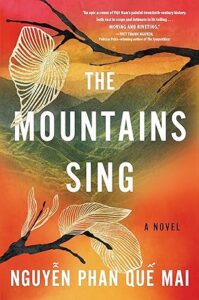What is a quiet story?
Picture books with not many actions and more focus on the feelings and emotions of the character are called quiet picture books (Don’t confuse quiet picture books with wordless picture books).
Most of the time, we can spot these books by looking at their covers and by browsing through them. The cover illustration is plain, soft, and bright, usually with only one character. Their text is sparse, and this gives the young reader time to digest the message of the book. Quiet picture books are the perfect medium to discuss social-emotional learning (SEL) topics and tough topics with children (like incarceration, domestic abuse, etc).
The lack of activity outside doesn’t mean these stories are boring. Having said that, they are prone to being boring if not crafted well. A character sitting there, thinking about this and about that and again about this, doesn’t make a quiet book.
A quiet story should show the emotional journey of the character. In other words, we need to craft a strong Character Arc which shows the character’s gradual change throughout the story to keep the reader interested until the last page.
How to build such a Character Arc? Let’s investigate some examples.
Quiet picture book examples
- TEN BEAUTIFUL THINGS (2021) by Molly Griffin and Maribel Lechuga is the story of a girl who moves to live with her grandmother. As they start, the grandmother suggests she find 10 beautiful things on their way. The girl says there is nothing beautiful here. In the end, she finds that she and her grandmother are the tenth beautiful thing and hug her grandmother.

Thus, in this story, we have got two opposite states. The initial state is unappreciative and the final state is appreciation. Making a character arc is like building a bridge. Mark one spot on each side of the river and make the bridge—the story!

- WATERCRESS (2021) by Andrea Wang and Jason Chin starts with a girl riding with her family in their car. The father stops the car when he sees the watercress by the roadside, and they get off to pick up some. Here is the initial state: the girl is ashamed of what her parents do, and when a car passes by, she is afraid to be recognized. At the end of the story, she enjoys eating the meal from the watercress and is thankful for her family and food.

- THE RABBIT LISTENED (2018) by Cori Doerrfeld is the story of a boy—Taylor—who plays and builds things with wooden blocks. The amazing thing he built got destroyed, and he has no one to turn to. All animals think they know how to help Taylor. But, they don’t really know. Until a rabbit comes and sits and listens. In the end, they hug each other. Do you see the change? From loneliness to being heard and hugged.

- IT WILL BE OK: A STORY OF EMPATHY, KINDNESS, AND FRIENDSHIP (2021) by Lisa Katzenberger and Jaclyn Sinquett is the story of a giraffe who is scared of spiders. The giraffe sits atop a tree and doesn’t come down (initial state). His friend, a zebra, listens and waits until the spider leaves and the giraffe comes down. At the end of the story, the scared giraffe learns the spider is afraid too, and waits under the tree for it. The story shows an emotional journey, from being scared to being supportive.

- NOOK (2021) by Sally Anne Garland is about a rabbit, called Nook, who likes sitting alone in quiet places. Sitting in a hollow in a tree, Nook rejects other animals’ invitations to join them and play. One day, another animal takes the hollow. Other animals stand by her side to push away the stranger from the hollow. Even though the hollow is empty afterwards, Nook decides to play with others. The story shows the change from loneliness to being accepted in the community.

- LITTLE BROWN (2018) By Marla Frazee (You cannot read it on Edelweiss+) tells the story of a cranky, lonely brown little dog. No dog plays with the little brown dog, and he doesn’t play with them either! The little brown collects toys from other dogs, and this makes him lonelier than before. The story shows the vicious circle. The little dog wants to be accepted but doesn’t know how to deal with the situation,n and his grumpy and aggressive behavior makes the situation worse. The story ends with this sentence: “Maybe tomorrow they would know what to do.” An open Ending well suits the story.

A change in the character does NOT mean overcoming a problem. In the above example, we saw that little brown’s problem remained unsolved, but there was a change. At the end of the story, the other dogs are thinking of the little brown and seeking a solution.
- ELMORE (2018) by Holly Hobbie is about a porcupine who is desperate to find friends. For obvious reasons, no one wants to befriend him. This story’s message is about changing the attitude. Elmore sweeps his scattered quills and gives them for free to the other animal,s and they thank him by writing letters with the quill pens Elmore gave them. The interesting aspect of this story is the character agency.

Pitching quiet manuscripts
Pitching quiet manuscripts is a bit different than selling other manuscripts. Thanks to my friends, previously, I have collected pitches of some published picture books (read here and here). Now, I am gathering pitches for published quiet books. Could you please drop me a short message if you have published a quiet picture book or if you know a friend who did so?
I write blog posts about the craft of writing picture books (PictureBookPedia) and chapter books (ChapterBookPedia). Also, I publish a quarterly newsletter that includes links to my recent blog posts. The form you have selected does not exist.





Great post! Thanks for including IT WILL BE OK!
Thank you, Lisa!